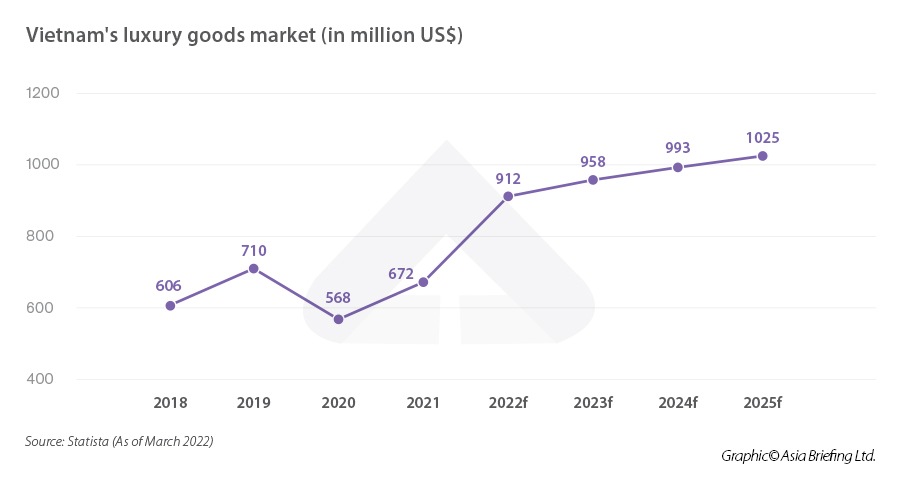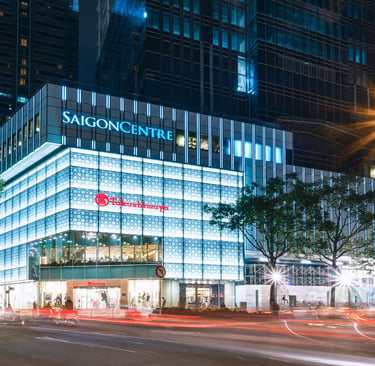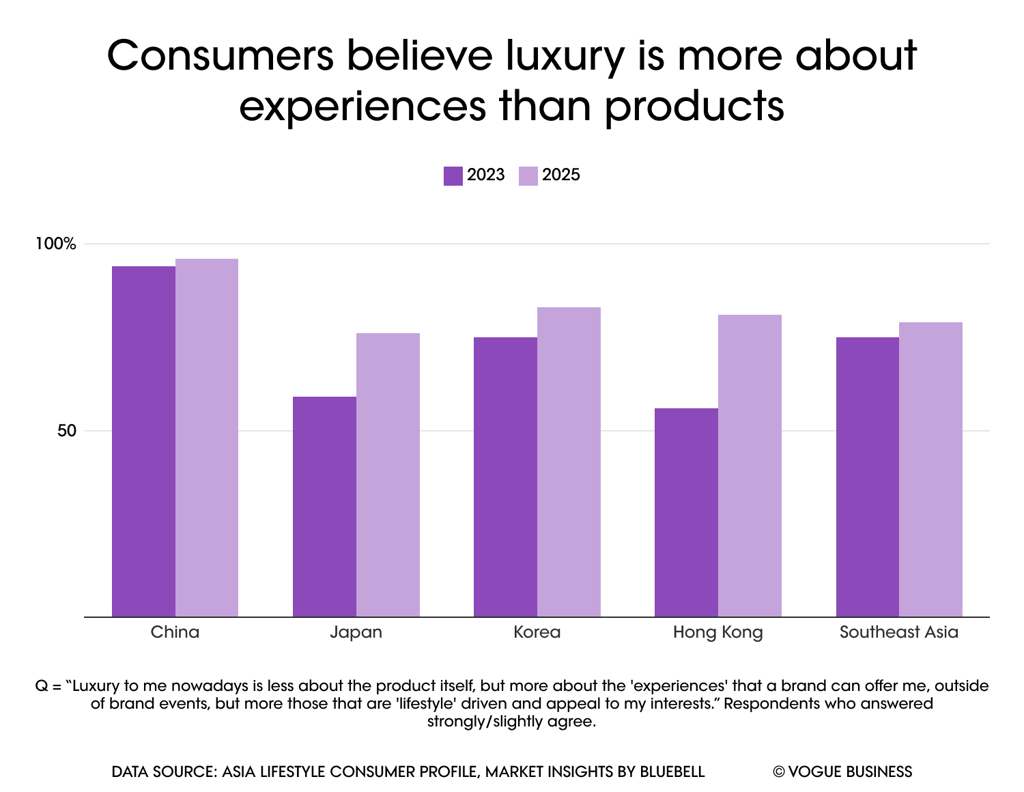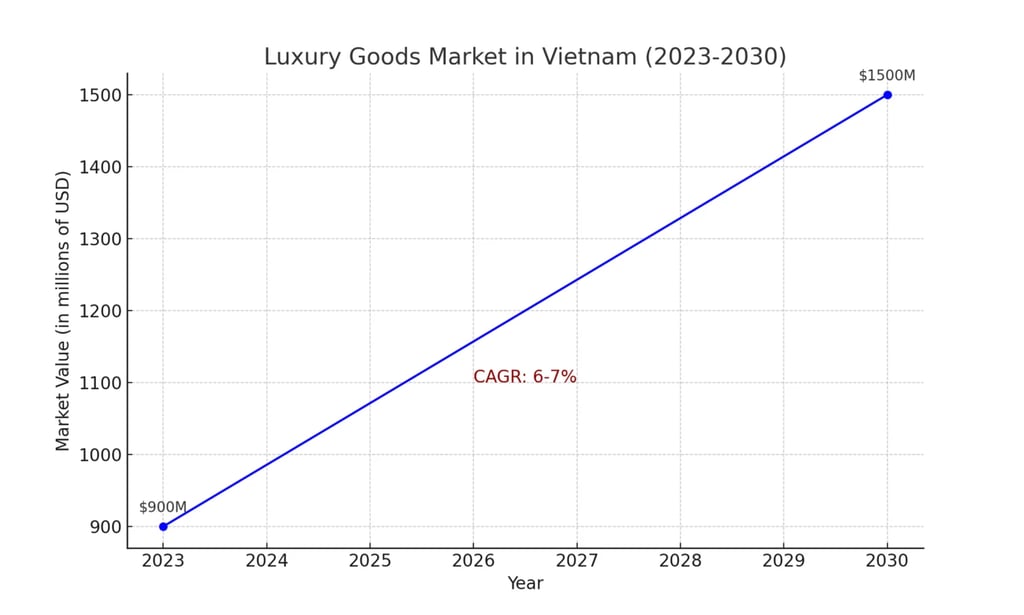Defying Global Slumps: Vietnam's Luxury Market Growth Amid Rising Wealth
Unpack why Southeast Asia, including Vietnam, sees luxury sales booming to US$4 billion by 2033 while global markets decline.
INSIGHTS
BDP+Partners
9/15/20255 min read


Established in 2023, BDP+Partners is a forward-thinking consulting firm dedicated to delivering innovative strategies and sustainable revenue growth for clients in the luxury sector. As Vietnam's economy continues to flourish, defying broader global economic headwinds, this post dives deep into the resilient growth of the country's luxury market. We'll explore market dynamics, emerging trends, consumer behaviors, challenges, opportunities, real-world case studies, and forward-looking projections, providing actionable insights for brands and investors aiming to capitalize on this booming sector. Drawing from the latest data and industry news, we highlight how Vietnam stands out in Southeast Asia, offering bold pathways for market entry and expansion.
Market Overview: Resilience in a Global Downturn
Vietnam's luxury goods market is a beacon of growth in an otherwise challenging global landscape. In 2024, the market reached US$2.3 billion, and projections indicate it will expand at a compound annual growth rate (CAGR) of 7.3% from 2025 to 2033, hitting US$4.0 billion by the end of the forecast period. This robust performance contrasts sharply with the global luxury market, which is expected to experience a slowdown, with sales potentially declining by up to 5% in 2025 due to economic uncertainties, tariffs, and weakened consumer confidence. Southeast Asia, including Vietnam, is proving to be an exception, with shoppers continuing to splurge on high-end products amid regional wealth accumulation.
Key segments driving this growth include fashion, accessories, beauty, and hard luxury items like watches and jewelry. The luxury fashion market alone is forecasted to reach US$639.0 million by 2033, growing at a 6.24% CAGR from 2025 onward. Statista estimates the overall luxury goods revenue at US$2.06 billion in 2025, with an annual growth rate of 3.26% through 2030. This expansion is underpinned by Vietnam's rising affluent class; by 2026, the country is expected to have 25,812 high-net-worth individuals (HNWIs) with liquid assets exceeding US$1 million.
In the broader Southeast Asian context, the luxury goods market is anticipated to grow from US$135.25 billion in 2024 to US$192.17 billion by 2033. Vietnam, alongside Singapore, Indonesia, the Philippines, and others, is contributing to this upward trend, even as markets like China see declines in international travel and spending. For instance, Singapore's luxury sales are projected to rise 7% to S$13.9 billion (approximately US$10.9 billion) in 2025, defying regional slowdowns. Vietnam's market resilience is further evidenced by sectors like luxury real estate, with apartments valued at US$3.64 billion in 2025, and luxury travel at around US$3.2 billion.


Foreign direct investment (FDI) plays a pivotal role, with US$2.37 billion flowing into Vietnam's real estate in 2025, funding smart cities and luxury resorts. This influx supports infrastructure that caters to affluent consumers, positioning Vietnam as a key player in Asia's luxury ecosystem, where the ultra-high-net-worth (UHNW) population is projected to grow by nearly 40% by 2030.
Key Trends Shaping Vietnam's Luxury Landscape
Several trends are fueling Vietnam's luxury market defiance. Sustainability is at the forefront, with consumers increasingly favoring eco-friendly and ethically sourced products. Brands incorporating green practices, such as recycled materials in fashion or sustainable sourcing in beauty, are seeing heightened demand. Digital transformation is another driver; e-commerce platforms and social media are revolutionizing how luxury goods are marketed and sold, with AR try-ons and virtual showrooms enhancing the shopping experience.
The beauty sector is evolving with a focus on clean, natural ingredients, attracting foreign investments and boosting market maturity. In hard luxury, watches and jewelry lead, driven by rising incomes and a preference for status symbols. Apparel and accessories dominate, with personal luxury goods growing as urban middle-class consumers seek premium items.
Regionally, Southeast Asia's luxury trends emphasize experiences over products, with consumers in Vietnam and neighbors prioritizing brand-driven events and personalized services. Influencer marketing is booming, as seen in collaborations that generate significant media value— for example, Thai actor Apo Nattawin's appearance at Paris Fashion Week generated US$6.6 million for Dior. This trend extends to Vietnam, where local influencers amplify luxury brand visibility.
Duty-free shopping and tourism recovery are also key, with Asia's luxury market benefiting from increased travel within the region, contrasting with global declines. In Vietnam, urban centers like Ho Chi Minh City are becoming luxury hubs, with malls like Saigon Centre offering high-end retail experiences.
Consumer Shifts: From Products to Experiences
Vietnamese luxury consumers are evolving, with urban growth and digital savvy driving demand. Gen Z and millennials, comprising a significant portion of the market, favor experiences—such as exclusive events and personalized services—over mere products. This shift aligns with regional trends, where Southeast Asian consumers increasingly view luxury as lifestyle-driven.
Rising disposable incomes among the middle class are key, with selective spending on high-quality items. Online platforms influence 50% of purchases, blending social commerce with luxury e-tailing. HNWIs, projected at 25,812 by 2026, prioritize investments in real estate and collectibles, further bolstering the market.
Cultural factors play a role; Vietnamese consumers blend traditional values with modern aspirations, seeking brands that resonate with local identity while offering global prestige. Sustainability influences 40% of decisions, pushing brands towards ethical practices.


Challenges Facing the Market
Despite optimism, challenges persist. Global economic headwinds, including potential tariffs and wars, could impact supply chains and import costs. Domestically, economic volatility and inflation may temper spending among non-HNWIs.
Counterfeiting remains a concern, eroding brand trust, while regulatory hurdles for foreign brands complicate market entry. Infrastructure in non-urban areas lags, limiting reach. However, these are offset by Vietnam's stable growth and government support for FDI.
Opportunities for Brands and Investors
Opportunities abound in digital integration and localization. Brands can leverage e-commerce for wider reach, partnering with influencers for authentic engagement. Sustainable luxury offers differentiation, aligning with consumer values.
Real estate presents high-potential, with projects like the Trump Organization's US$1.5 billion development—including golf courses, hotels, and villas—highlighting investor interest. Tourism-driven duty-free shopping and experiential retail are growth areas.
BDP+Partners recommends bold strategies like hybrid retail models and targeted marketing to capture this market.
Case Studies: Success Stories in Vietnam's Luxury Sector
The Trump Organization's expansion exemplifies foreign investment, with a massive luxury project reshaping Vietnam's skyline. In fashion, collaborations like Apo Nattawin's with Dior demonstrate media impact, generating millions in value and inspiring local brands.
Local players are thriving, with FDI in real estate reaching US$2.37 billion, funding innovative developments. These cases illustrate how adaptability and investment yield returns in Vietnam's resilient market.
Future Projections and Strategic Recommendations
Looking ahead, Vietnam's luxury market is poised for sustained growth, reaching US$4.0 billion by 2033. Southeast Asia's overall market will hit US$192.17 billion, with Vietnam contributing significantly. Projections for UHNW growth to 27% of global share by 2030 underscore long-term potential.
Strategies include focusing on Gen Z through digital channels, emphasizing sustainability, and forming local partnerships. BDP+Partners advises comprehensive market analyses for entry.
In conclusion, Vietnam's luxury market defies global slumps through resilience, innovation, and consumer evolution. As thought leaders, BDP+Partners empowers your success—contact us for tailored insights and strategies to thrive in this dynamic arena.




Addresses
BDP+PARTNERS CONSULTING & MARKETING SERVICES
Vietnam's Office: No. 166 Ai Mo, Bo De, Long Bien, Hanoi 11813, Vietnam
Indonesia's Office: Jl. Raya Teges No.16, Peliatan, Kecamatan Ubud, Kabupaten Gianyar, Bali 80571, Indonesia
Subscribe to our newsletter
Contacts
GENERAL INQUIRY: hello@bdpnpartners.com
